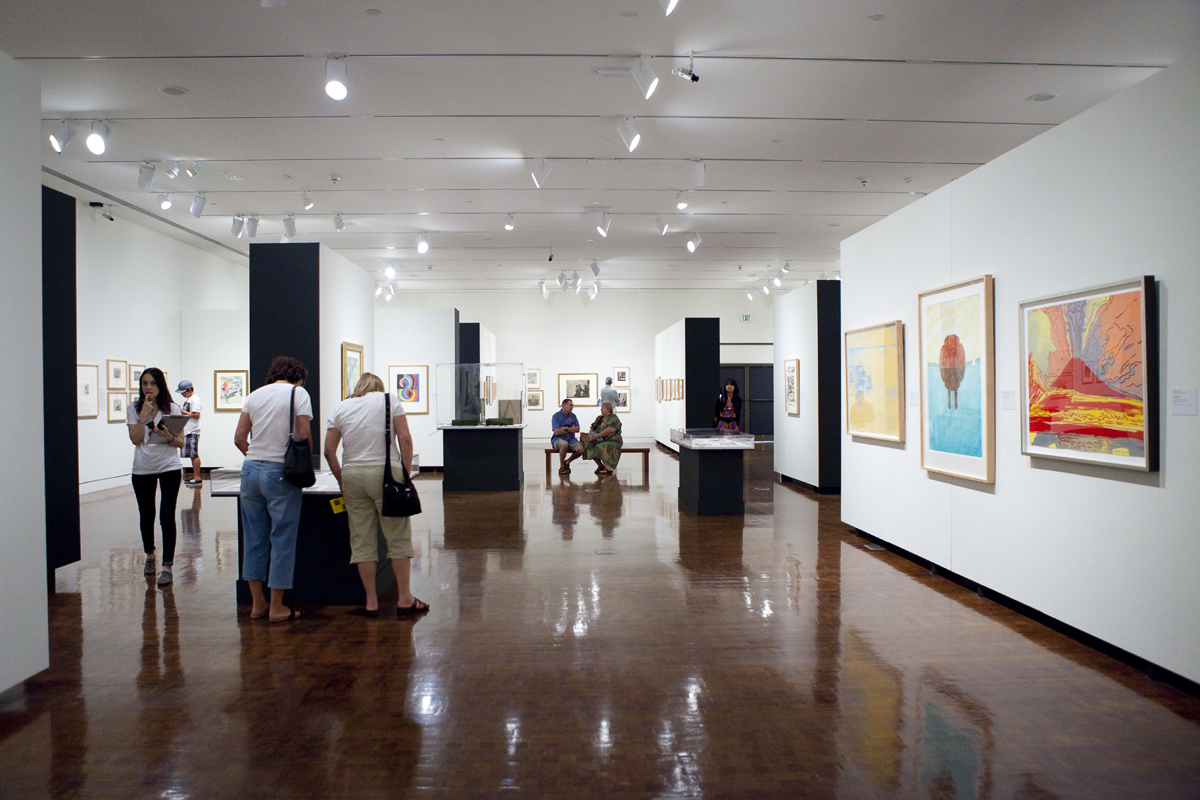[sidebar]
[slideshow size=’sidebar’]
[/sidebar]
If you think the Honolulu Academy of Arts is simply an aging bastion of Asian art, think again. You’d be forgiven (as I was) for believing this museum was singularly devoted to art of the East. It turns out that the Academy has, buried in its collection, works by artists who have defined Modern art as we know it.
From Whistler to Warhol: Modernism on Paper, on display until July 3, unveils some of the key pieces of the Academy’s Modern collection, and it feels like a revelation. Not only does it detail, in a coherent fashion, the complex and circuitous history of Modern art, but it also sheds light on particular artists who’ve been eclipsed by the colossal shadows cast by art giants like Picasso and Pollock. What’s more, this exhibition seems to have come out of nowhere. Who was behind this show, and, more importantly, if the Academy had this incredible cache of Modern art in its collection, why hadn’t it been shown until now?
“No one knew what we had, so I embarked on this process of discovery for the past year,” Theresa Papanikolas, the Academy’s curator of European and American art, and the organizer of this exhibition, told me. A former curator at the Los Angeles County Museum of Art, Papanikolas arrived at the Academy nearly two years ago, and decided to mount an exhibition of works on paper to showcase this little-known part of the Academy’s collection.
“I went through all our prints and drawings collection in Western art,” Papanikolas said. “And that’s about fifteen, maybe twenty thousand objects.” At first, she said, the show was conceived as a sort of “Greatest Hits” of the collection, and would include works by artists such as Rembrandt, Blake, and Dürer. But, she soon realized, the collection was particularly strong in Modernist works. “I thought, There’s enough here to do a show that gives an overview of nineteenth and twentieth-century art in a way that we can’t do with our painting and sculpture collection,” she said. “So that became the show.”
Last week, I walked through the exhibition with Papanikolas, who illuminated, in great detail, the specifics of the show, which is grouped into seven sections that ushers viewers through the sweeping course of Modern art: James McNeill Whistler and the 19th-Century Etching Revival; Prints and Drawings in Late-19th-Century France; Cubism and its Affiliates; German Expressionism; American Realism; Surrealism and Abstract Expressionism; and Minimalism and Pop Art.
There is, however, an eighth section in the exhibition, a curious addendum, which doesn’t quite fit in anywhere else. It sits in the middle of the gallery, encased in glass, isolated from the rest of the exhibition. Its contents? The entire career of the iconoclastic Frenchman, Marcel Duchamp, in miniature.
Papanikolas, in organizing this exhibition, wanted to have Duchamp’s “Boîte-en-valise” on display, but the museum didn’t own one. Serendipitously, a few days later, she received an email from the Zabriskie Gallery, in New York, saying they had this particular Duchamp piece, and asked if she’d like to include it in the exhibition. (In my opinion, this piece is the show-stopper.)
“This is one of the most influential artists of the twentieth century, right up there with Picasso, with Jackson Pollock,” said Papanikolas. “And yet our collection didn’t have a Duchamp, so luckily I was able to bring this here.”
It’s worth noting that Duchamp is the artist who took a common manufactured item (a bottle rack, or a urinal, for example) and signed it, which stripped the object of its useful function and elevated it to the level of art. These “readymades,” as he called them, were the antithesis to, say, oil paintings, in that the artist didn’t have a hand in making the object; he merely chose it.
Simply stated, Duchamp changed the Modern art Game, inaugurating the radical shift from art as the creation of “retinal” objects to art as a conceptual idea.
The Academy was lucky to receive a Duchamp “Boîte-en-valise,” but it will go down in history for unearthing a work of art that, until this exhibition, was thought to have been missing. One day, Papanikolas received a call from a curator at the Courtauld Institute of Art, in London, inquiring about a Cezanne drawing the Academy had in its Modernism show. The London curator was organizing an exhibition of Cezanne’s paintings and drawings of card players, and was searching for a particular drawing whose whereabouts were listed, in Cezanne’s catalogue raisonné, as unknown.
“He was calling on the off-chance that it was the same one,” Papanikolas said, “and indeed, it was.” The drawing, it appears, will travel to London, and then to the Metropolitan Museum of Art, in New York. “It’s great for us because that means our collection gets exposure,” she said, “and it will go down in history as being in our collection.”
As I walked through the exhibition, I wondered what, exactly, Papanikolas wanted people to walk away with after viewing this exhibition. “One,” she said, “a better understanding of Modern art. The feedback I’ve had is that people are getting that. The other thing is to know that we’re not just an Asian art museum. We have this huge, wonderful collection of European and American art as well.”
When I took one last stroll through the gallery, its walls positively aglow with the work of Modern artists who have altered how we perceive the world, it struck me that my perception of the Academy, too, had changed. Papanikolas’s mission, it seemed, was accomplished.

